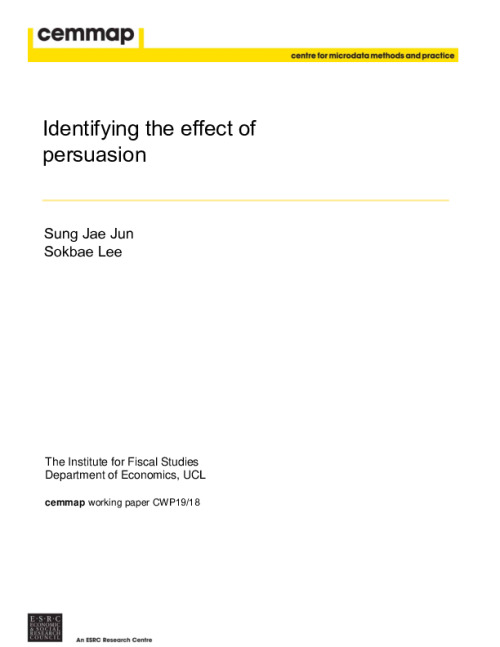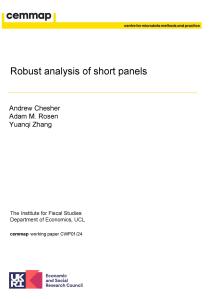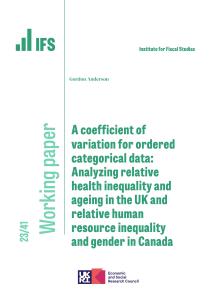Downloads

CWP191818.pdf
PDF | 511.1 KB
We set up an econometric model of persuasion and study identification of key parameters under various scenarios of data availability. We find that a commonly used measure of persuasion does not estimate the persuasion rate of any population in general. We provide formal identification results, recommend several new parameters to estimate, and discuss their interpretation. We revisit two strands of the empirical literature on persuasion to show that the persuasive effect is highly heterogeneous and studies based on binary instruments provide limited information about the average persuasion rate in a heterogeneous population.
Authors

Research Fellow Columbia University
Sokbae is an IFS Research Fellow and a Professor at Columbia University, with an interest in Econometrics, Applied Microeconomics and Statistics.

Pennsylvania State University
Working Paper details
- DOI
- 10.1920/wp.cem.2018.1918
- Publisher
- The IFS
Suggested citation
Jun, S and Lee, S. (2018). Identifying the effect of persuasion. London: The IFS. Available at: https://ifs.org.uk/publications/identifying-effect-persuasion (accessed: 18 April 2024).
More from IFS
Understand this issue

Gender norms, violence and adolescent girls’ trajectories: Evidence from India
24 October 2022

Raising revenue from closing inheritance tax loopholes
18 April 2024

Sure Start achieved its aims, then we threw it away
15 April 2024
Policy analysis

ABC of SV: Limited Information Likelihood Inference in Stochastic Volatility Jump-Diffusion Models
We develop novel methods for estimation and filtering of continuous-time models with stochastic volatility and jumps using so-called Approximate Bayesian Compu- tation which build likelihoods based on limited information.
12 August 2014

Assessing the economic benefits of education: reconciling microeconomic and macroeconomic approaches
This CAYT report discusses the strengths and limitations of several approaches to assessing the effect of education on productivity.
14 March 2013

Misreported schooling, multiple measures and returns to educational qualifications
We provide a number of contributions of policy, practical and methodological interest to the study of the returns to educational qualifications in the presence of misreporting.
1 February 2012
Academic research

Understanding Society: minimising selection biases in data collection using mobile apps
2 February 2024

Robust analysis of short panels
8 January 2024

A coefficient of variation for ordered categorical data: Analyzing relative health inequality and ageing in the UK and relative human resource inequality and gender in Canada
21 December 2023